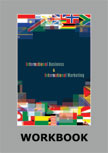The Indian IPO Market in Early 2008




|
|
ICMR HOME | Case Studies Collection
Case Details:
Case Code : BENV016
Case Length : 18 Pages
Period : 2006-2008
Pub Date : 2008
Teaching Note :Not Available
Organization : -
Industry : Financial Sector
Countries : USA
To download The Indian IPO Market in Early 2008 case study
(Case Code: BENV014) click on the button below, and select the case from the list of available cases:

Price:
For delivery in electronic format: Rs. 300;
For delivery through courier (within India): Rs.
300 + Rs. 25 for Shipping & Handling Charges
»
Business Environment Case Studies
» Case Studies Collection
» ICMR Home
»
Business Environment Short Case Studies
» View Detailed Pricing Info
» How To Order This Case
» Business Case Studies
» Case Studies by Area
» Case Studies by Industry
» Case Studies by Company
Please note:
This case study was compiled from published sources, and is intended to be used as a basis for class discussion. It is not intended to illustrate either effective or ineffective handling of a management situation. Nor is it a primary information source.
|
|
<< Previous
Excerpts
A Spate of Withdrawals
|
In the first week of January 2008, RPL announced that it would offer 260 million equity shares (including the promoters' share of 32 million shares) to the public. According to the company's statement, the IPO was to be priced between Rs 405 and 450 and would raise between Rs 92.34 billion and Rs 102.6 billion.
After RPL's IPO opened on January 15, 2008, there was a rush in the market to apply for the issue. "It has created an unprecedented euphoria in the market. The issue would be a good option for retail investors who are looking for short term gains," said Rajesh Jain, Vice President of SMC Global...
|
|
What Went Wrong?
Several explanations were offered as to why the three IPOs failed in quick succession. A survey conducted by ASSOCHAM in early 2008 concluded that overpricing of the issues and investor's risk averseness due to weak global cues were the main reasons for the failure of the IPOs. The report said, "While Indian stock markets have become structurally strong and well-regulated, bad pricing of issues and weak market sentiment have played spoilsport."...
|
Looking Ahead
In early February 2008, the Indian Finance Ministry proposed to increase the minimum public holding in all listed companies to 25 percent from the existing 10 percent, in order to reduce the scope for price manipulation and to introduce more public participation in the stock market.
According to an ASSOCHAM Eco Pulse study, only two companies -- Bajaj Auto and Larsen and Toubro (L&T) -- satisfied the proposed criteria of minimum 'public' shareholding and this was expected to result in a large number of IPOs in the coming months... |
Exhibits
Exhibit I: A Brief Note on IPOS in India
Exhibit II: Top IPO Markets in the World
Exhibit III: BSE Sensex between May 2007 and May 2008
Exhibit IV: IPOs Withdrawn in February 2008
Exhibit V: Some IPOs Listed Between January 01, 2008 and February 15, 2008
Exhibit VI: A Note on IPO Gray Market in India
Exhibit VII: Listed Companies* Having 25% or Less Public Shareholding
|
|



